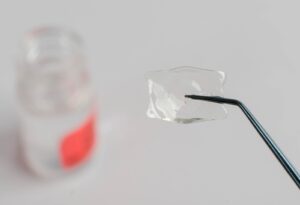
Did you know that there are many ways to accomplish permanent vision correction beyond LASIK? An ICL, also known as an implantable collamer lens or an implantable contact lens, represents some of the best technology the eye care world has to offer.
More than a million ICLs have been implanted, and that number continues to climb every day. There are many reasons why patients choose ICLs. Chief among them is the ability to experience greater visual freedom.
If you are nearsighted or have a nearsightedness with astigmatism, the ICL may be an excellent option for you. Keep reading to learn more about implantable contact lenses!
What Is an Implantable Contact Lens and How Does It Work?
An implantable contact lens is similar to your everyday contact lens. The big differences are that they are intended to be worn permanently, and they are placed inside your eye.

An ICL is made of collamer, a biocompatible material that is flexible without sacrificing stability. An ICL is placed between your natural lens and your iris, which is the colored part of your eye.
Soft and transparent, you cannot see it or feel it. However, what you can see and feel is the dramatic difference it brings to your vision.
When you have a refractive error like nearsightedness, the shape of your eye causes light to not land on the retina. This is what results in blurry vision.
The ICL bends the light that enters your eye so it can land directly on the retina, and you can experience a clear image.
What Happens During the ICL Procedure?
The procedure of implanting an ICL is considered an outpatient procedure. It only takes twenty to thirty minutes to perform.
To ensure you’re comfortable, your eye doctor will numb your eyes with eye drops. Then, they will make a tiny opening in the surface of your eye, known as the cornea, through which they will insert the folded lens.

Next, they will position the lens in the appropriate place. The opening in your cornea is so small that no sutures are needed.
As soon as the procedure is complete, most patients notice an immediate change in their vision. However, in some cases, it can take a while for the eyes to adjust.
You will be able to return home the same day, and you can resume most normal activities within a couple of days. No extensive recovery period is required.
You can expect to enjoy excellent vision after the ICL procedure. The vast majority of those who choose to have ICL surgery are able to reduce their reliance on glasses or contacts to see every day.
You, too, can make that daily hassle a thing of the past!
What Sets the ICL Apart From Other Procedures?
If you wear glasses or contacts, you’ve probably thought about permanently correcting your vision with a procedure like LASIK or SMILE. However, an ICL can provide the same crisp, clear vision with less invasiveness and risk of complications.
When you get LASIK, the LASIK surgeon must create a flap in your cornea in order to access the tissue beneath. Once they’ve reshaped your corneal tissue, they fold this flap back in place.
With an ICL procedure, this flap is not required. The implantation of an ICL is less invasive than LASIK and SMILE as well.
With SMILE, the curvature of your cornea is altered. With an ICL, your eye remains unchanged, and no tissue is removed from your cornea. It only involves the placement of a lens.
Because it’s less invasive, your eye heals faster with an ICL than with a procedure like LASIK or SMILE. That means you can get back to doing what you love sooner and with clear vision!
In addition, for some patients, LASIK or SMILE can trigger dry eye symptoms. You are less likely to encounter this with an ICL. Plus, since there is no corneal flap needed, you won’t have to worry about this becoming dislodged as it’s healing.
Another key feature that sets the ICL apart is the fact that it’s the only manner of permanent vision correction that is removable and reversible. While it is intended to be permanent, it can give patients peace of mind that the lens is removable if there is a change to their eye that requires a future procedure.
Who Is a Good Candidate for an ICL?
The ICL is designed to help with nearsightedness and a small amount of astigmatism. If you are farsighted or have a high degree of astigmatism, there are other options available for you that will better suit your eyes.

If you do not qualify for LASIK, you may still be able to get an ICL. If you’ve been told that your corneas are too thin for LASIK, an ICL can still be a viable option for permanent vision correction.
It can be performed even if you have thin corneas. Likewise, those who do not qualify for LASIK due to severe nearsightedness may still be able to correct it with an ICL.
The best way to determine if an ICL is a good option for vision correction for you is to visit your eye doctor at Cheema MD for a consultation.
Are you interested in reducing your dependency on glasses or daily contacts with an ICL? Schedule an ICL consultation at Cheema MD Eye Care in Kingston, NY, today!



